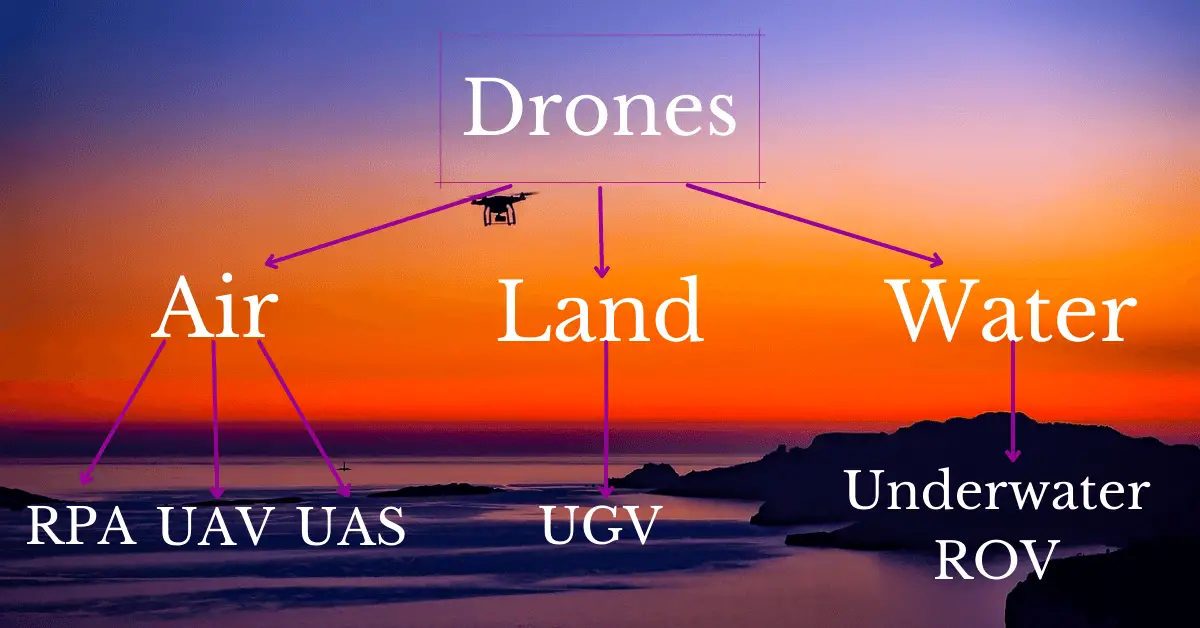Unmanned systems are becoming more and more popular every day. With this popularity, organisations, industry leaders and operators are finding and using new terms to describe them depending on their capabilities.
In this post we’re going to break down what these differences are, what some advantages and disadvantages are between these terms and some popular examples of drones and synonyms that are also used to describe a drone.
So, what is the difference between a drone, UAV and UAS?
Drones are unmanned vehicles capable of diving into the water and flying high in the sky whereas unmanned aerial vehicles (UAVs) only describe unmanned vehicles that can fly. Both drones and UAVs are used to describe the drone itself, and not what it’s made up of. An unmanned aerial system (UAS) is the system that makes up a drone including the hardware and software inside the drone. but is also limited to only flying vehicles.
To fully understand what we will be discussing today, it’s important to know what each of these terms mean.
It’s important to note that any unmanned aircraft must be capable of being reused, otherwise it would not be classified as a drone, UAV or UAS.
These definitions may change in the future once organisations such as the Federal Aviation Administration (FAA) settle on the terms that should be used to describe unmanned vehicles.
What Is A Drone?
The term drone refers to all unmanned vehicles that are controlled remotely. These vehicles include water, land and air systems and all remotely operated vehicles that can be autonomous.
The term DRONE itself is an acronym which stands for Dynamic Remotely Operated Navigational Equipment.
This is the most common term used in today’s world to describe unmanned vehicles. This term has become a way to group up all the different types of unmanned vehicles, including ones that can travel on land and under water.
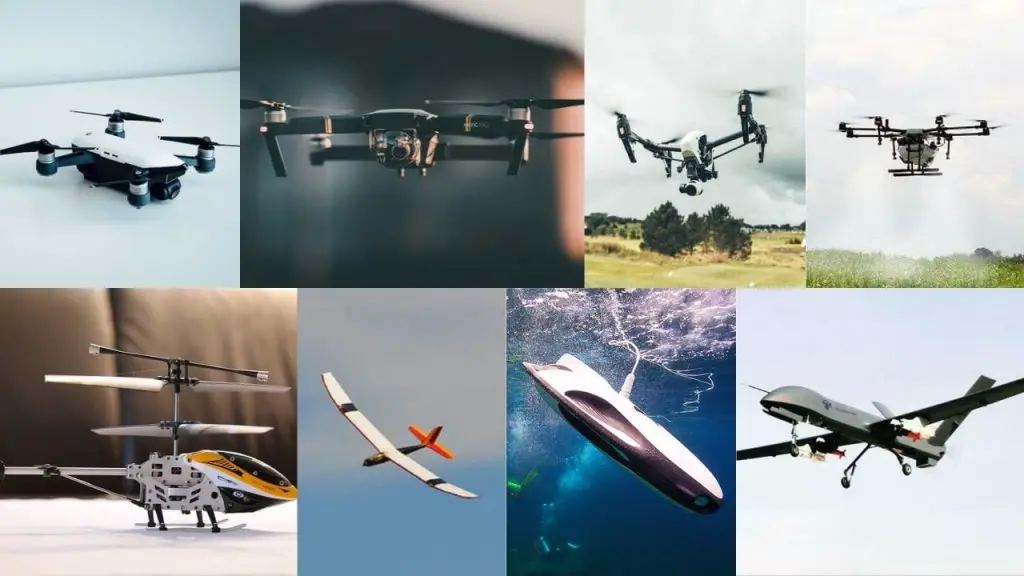
A drone can be used to describe a consumer, commercial and even a military unmanned aerial system (UAS).
If you’d like to learn all about consumer drones, we have a full post on this topic!
Related Post: What Are Consumer Drones? [Types, Uses, Sizes, Materials And Much More]
This term even includes unmanned vehicles that can fly autonomously.
What Is An Unmanned Aerial Vehicle (UAV)?
Unmanned aerial vehicles (UAVs) are remotely piloted aircraft that can fly.
This term is most commonly used to describe military drones, however, it can actually be used to describe any drone that flies.
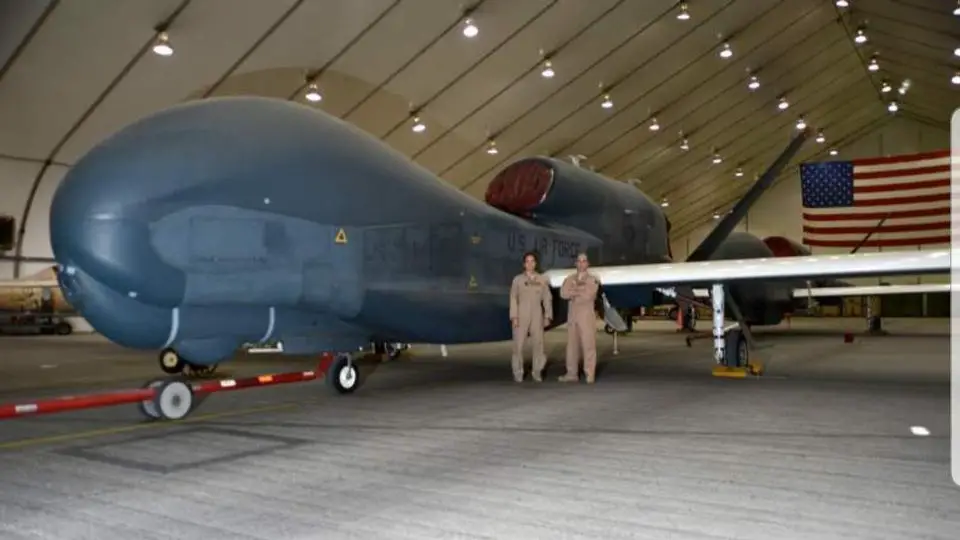
Their are many types of drones that can be called UAVs such as fixed-wing and multi-rotor drones as long as they are remotely operated and can fly.
If you’d like to learn more on the different types of drones including the types according to design, payload, range, power source and use cases including some examples of both consumer, commercial and military drones, then check out our full post below:
Related Post: What Types Of Drones Are There? Every Type Of Drone Explained In Detail
Take note that some people also like to differentiate between a drone and a UAV by saying that all UAVs are more advanced than drones.
What Is An Unmanned Aerial System (UAS)?
Unmanned aerial systems (UAS) refer to everything that enables the drone to function including the flight controller, motors, electronic speed controller and even the operator controlling the drone through a transmitter (controller). However, the term UAS refers specifically to flying drones in general.
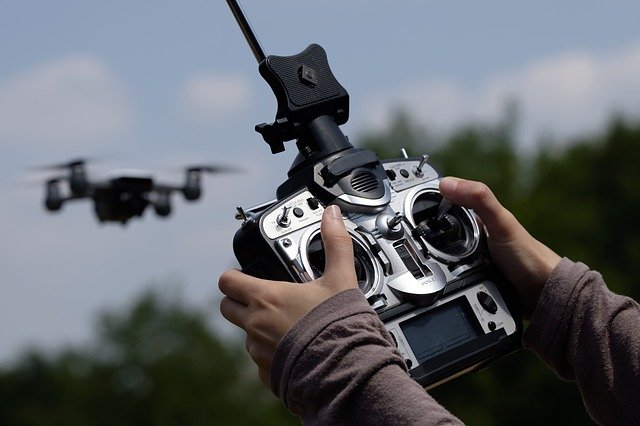
We have a full post that dives into more on the different parts, materials and why most drones use carbon fiber below:
Related Post: What Are Drones Made Of? Detailed Guide To Drone Anatomy [Consumer+Commercial]
What Are The Differences Between Drones, UAS And UAV?
To summarise the information above, a drone can refer to every kind of unmanned vehicle, whereas a UAV only refers to unmanned aircraft that can fly.
A UAS refers to not only the physical drone itself, but also to all the components that allow it to fly including the software and possibly the person controlling it if it’s not autonomous. UAS are similar to UAV as they both refer specifically to flying aircraft.
You can look at it this way, a UAV is a small section of the larger group called UAS. And this larger group called UAS is a small section part of an even larger group called drones.
Most of the leaders in the drone industry that set the rules and regulations and that manufacture the drones have tried to differentiate drones into different categories with these different terms that we see throughout this post.
However, this industry (commercial and consumer drone industry specifically) is actually still quite new and therefore more specific terms may be created in the future.
If you’d like to find out some of these top drone manufacturers today in the consumer, commercial and military drone industries including some fun facts about them, we have a full post on this topic below:
Related Post: Top Drone Companies/Manufacturers In The World [History, What They Offer, Popular Drones And More]
Now let’s see if there are any differences between the three in terms of cost.
Are there differences in cost?
All three can have varied price ranges. The price will mostly depend on the quality of the product and the features it has included.
It is very difficult to give estimates on the differences in cost between the three as they are all very similar.
UAS and UAV both refer to unmanned aircraft and will therefore be very similar in price. Drones include every type of unmanned vehicle available on the market, including military drones, leading to a much wider price range as compared to the more limited category of unmanned aircraft.
Therefore, all we can provide is the average price range of various types of drones that are both grounded and that can fly.
The average price of a multi-rotor drone is between $30 on the cheap end to $300 and up for more expensive options with more features.
The average price of a fixed-wing drone is between $50 on the cheap end to over $400 on the pricier side.
The average price of an underwater drone (Underwater ROV) is between $500 to $4000.
Military UAV can cost anywhere from a few thousand dollars to tens of million dollars.
If you’d like to discover the differences between cheap and expensive drones, how hard each are to fly, how long they can fly, some types of drones including their price ranges and what a good price for a drone is, check out our full post below:
Related Post: Cheap VS Expensive Drones – Everything A Beginner Drone Pilot Should Know
What are the differences in uses?
Since UAVs and UASs are both restricted to the air, they will be employed for similar tasks.
Therefore in this section we will group together the UAV and UAS categories and compare them to drones in a quick rundown of the differences in applications.
Since UAS are restricted to operate only in the air, they can only carry out a much smaller range, but still significant amount of applications such as search and rescue operations, firefighting, wildfire control, 3D mapping, delivery of goods, mining, agriculture, real estate and much more.
All of the above applications use specifically aerial drones (UAV) to carry out the tasks and operations in the best way possible.
Drones on the other hand have a much more extensive amount of applications. These include underwater uses, land-based uses and also aerial uses. We won’t include the aerial uses as we’ve already stated some above.
Take note that many refer to land-based drones as unmanned ground vehicles (UGVs).
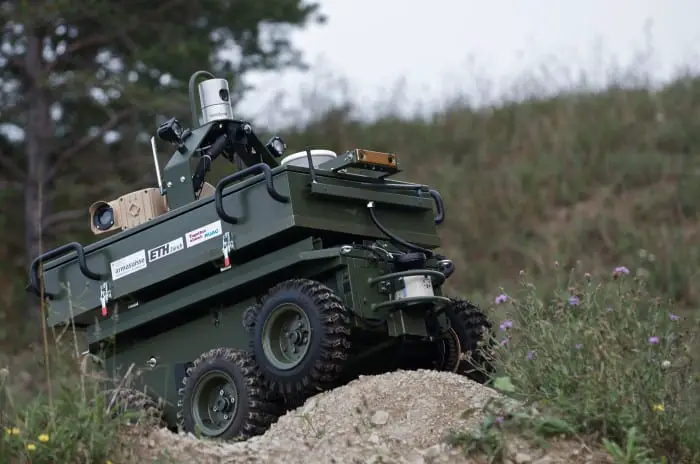
Drones are commonly used for marine biology, urban farming (aquaponics), inspections of underwater infrastructure, land surveying, surveillance, reconnaissance, to enhance police and military raids in urban settings and even explorations of planets.
The above applications are a very small percentage of the total uses of drones on all levels (water, land, air and even outer space).
We have a full post where we dive into 10 examples of some very common uses of drones in our daily lives and explain in detail the entire process behind these applications:
Related Post: 10 Common Uses of Drones In Our Daily Lives You May Not Know About
Are there differences in size?
There is typically no real difference in size between the three categories. Each can vary in size which makes it impossible to give average sizes based on the type of drone.
However, we can give averages on the size based on the target market the drone was built for and the applications it will be used for.
Below we will briefly state the average sizes of the smallest to largest drones in the consumer and commercial market as well as the military market.
Consumer and commercial drones can range from very small drones weighing only 200g (0.2kg or 0.44 lbs) or less to large drones weighing 20kg (44 lbs).
Military UAV can range from very small drones weighing less than 150kg (<331 lbs) to large drones weighing over 600kg (>1323 lbs).
We have a full post on drone sizing where we go into not only the various sizes drones come in, but we also talk about whether the size of a drone matters, consumer, commercial and military drone sizes, how to measure the frame size of a drone and much more:
Related Post: Drone Sizes Explained: Consumer, Commercial And Military Drone Sizes
Take note that the size of your drone may also affect what rules and regulations you will need to obey in your country.
For example, in the United States, the Federal Aviation Administration (FAA) enforces the rule that you need to register your drone if it weighs more than 250 grams (0.55 lbs).
Popular Examples Of Drones
Here are a few popular examples of UAS and drones including where they’re used and the type of drone they are considered to be.
| Model | Type Of Drone (Term Used) | Used In |
| General Atomics MQ-1 Predator | UAV | Military |
| iRobot 310 Soldier UGV (SUVG) | UVG | Military |
| Autel Robotics Dragonfish | Hybrid VTOL UAV | Commercial Industry |
| DJI Agras MG-1 | UAV | Commercial Industry |
| Geneinno Titan | Underwater ROV | Consumer Industry |
| DJI Mini 2 | UAV | Consumer Industry |
Popular Synonyms For UAS
Here are 10 popular synonyms for unmanned systems you may have heard of:
- UA: Unmanned aircraft can be used interchangeably with all other aerial drones as it refers specifically to flying vehicles
- Autonomous Underwater Vehicle (AUV)
- Unmanned Underwater Vehicle (UUV)
- Remotely Operated Vehicle (ROV): ROVs are often used to describe an underwater drone. This term however can be used to describe all types of drones
- Remotely Operated Underwater Vehicle (ROUV)
- Remotely Piloted Aircraft (RPA): RPA and UAV have the same meaning essentially. They are both used to describe unmanned aircraft. These two terms differentiate from the term drone as they are often used to describe remotely piloted aircraft that may require more experience to fly
- Remotely Piloted Aircraft System (RPAS): RPAS refer to the system that makes up a RPA
- Unmanned Ground Vehicle (UGV): UGVs refer to all drones that can only be used on the ground
- Unmanned Combat Aerial Vehicle (UCAV): This refers secifically to aerial drones used for combat purposes
- Unmanned Aerial Vehicle System (UAVS): UAVS refer to the system that makes up a UAV
Here is a small list to give you a general idea of which countries use which terms most often:
- French speaking countries: drones
- United States and United Kingdom: UAS
- Other National Aviation Agencies: RPAS
- Media on the Internet: UAV and drones
Conclusion
As you may have noticed, some of the differences between these terms can be very minor, however, they’re still very important distinctions to know about.
New terms used to describe certain aspects of drones are sure to be implemented in the drone vocabulary sooner than later in order to have an easier time describing specific areas around drones.
For now, these are the major terms you can use today in order to describe the types of drones you may see around you in every day life.
